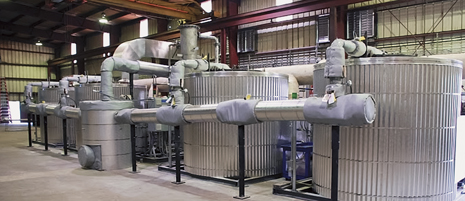|
With the search for recoverable hydrocarbons expanding to hotter, deeper and further offshore realms—some even more frigid, as in the case of the Arctic—and the development of alternative energy technology, the idea of turning hydrocarbon-based consumer products back into oil seems too good to be true. One company, however, is making this concept a reality, by becoming the first in the world to successfully convert unused, untapped energy contained within waste plastic, thus giving a whole new meaning to the phrase, “one person’s trash is another person’s treasure.”
Beaverton, Ore.,-based (near Portland) Agilyx has developed a technology that turns plastic waste products, otherwise destined for landfills and disposal, into synthetic crude that can be sold and converted into fuel, diesel or other petrochemicals. Founded in 2006 by Chris Ulum and Kevin DeWhitt, Agilyx was based on a simple look at supply-and-demand statistics—in 2012, 325 billion lb of industrial and municipal plastic were deposited in landfills, while world liquid fuels consumption increased by 0.8 MMbopd to 89.1 MMbopd. “It’s solving two big problems at once,” Ulum said. While the principles behind Agilyx’s mission are fundamental, developing the technology to make it happen was exponentially more complex. “It’s not that the plastic is impossible to recycle, but it can’t be done economically,” Ulum said. Waste plastics are often co-mingled with several other materials and are expensive to combust. Agilyx tackled this challenge by building processing units that are both scalable and contain multiple-base systems, such as common exhaust, environmental control devices and central supervisory stations. Using an industrial burner, hot air is heated and circulated throughout a large processing bin that contains the plastic materials to be combusted. When the plastic feedstock has been heated from solid, to liquid, to gas, by being broken down into short-chain hydrocarbons, a negative pressure vacuum system pulls the gas from the vessel into a central condensing system, where it is cooled and condensed into synthetic crude oil. A filtering system removes debris. After a coalescing and settling stage, the crude is then moved to storage tanks. Agilyx installs the systems on site, where plastic waste is originally collected. Aside from maintenance and technology support, the company also works to negotiate contracts with refiners for the synthetic end-product. Around 10 lb of plastic, on average, can create a gallon of synthetic crude oil. Currently, each system can convert 20,000 lb (10 tons) of plastic a day. Working with customers around the globe, Agilyx’s average deal sizes are from $10 million to $15 million. The company estimates that, with the revenue from selling the synthetic crude that is produced, investment costs can be earned back in 3.5 to 4.5 years. Agilyx currently holds five technology patents and has attracted interest, from offers to collaborate on technology development to investment, from some big players in both the waste and energy industries, including France’s Total, Waste Management Inc., and Valero Energy. In 2012, Agilyx received a World Technology Award and was recognized for the energy innovation of “the greatest likely long-term significance.” The World Technology Awards are often referred to as “the Oscars” of technology, in part because of their peer-review selection process. Agilyx was one of 30 companies and individuals selected from a pool of 600 nominees. “We want to put the technology where the waste is, rather than moving the waste to the technology,” Ulum said. “It doesn’t make sense to unnecessarily transport garbage. It doesn’t add value. It just adds cost and carbon emissions.” |
- Prices and governmental policies combine to stymie Canadian upstream growth (February 2024)
- U.S. producing gas wells increase despite low prices (February 2024)
- U.S. drilling: More of the same expected (February 2024)
- U.S. oil and natural gas production hits record highs (February 2024)
- U.S. upstream muddles along, with an eye toward 2024 (September 2023)
- Canada's upstream soldiers on despite governmental interference (September 2023)



